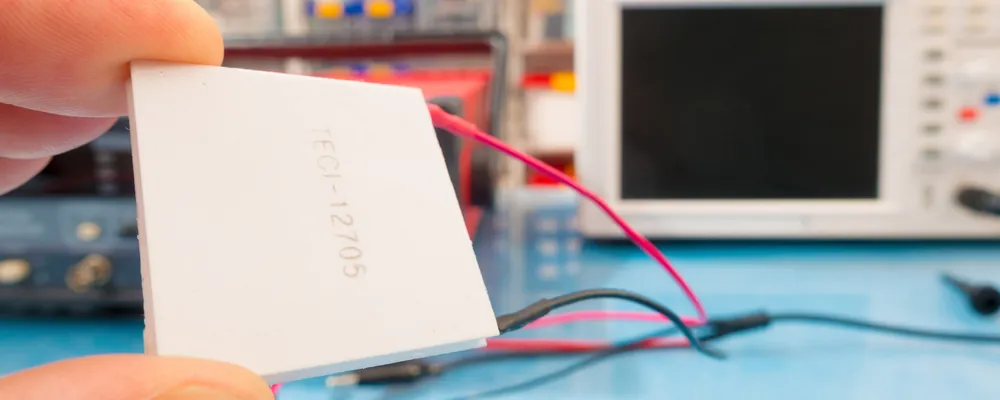
Revolutionary Organic Thermoelectric Device Converts Heat to Electricity at Room Temperature - Game Changer for Energy Harvesting!
2024-09-26
Revolutionary Organic Thermoelectric Device Converts Heat to Electricity at Room Temperature - Game Changer for Energy Harvesting!
In a groundbreaking development, researchers at Kyushu University have unveiled a cutting-edge organic thermoelectric device capable of efficiently transforming ambient heat into electrical energy at room temperature. This innovative technology is set to revolutionize the energy harvesting landscape.
No Cooling Units Required!
Unlike traditional thermoelectric devices that necessitate significant temperature differentials to function optimally, this novel device operates seamlessly without cooling units, making it remarkably compact and efficient. Utilizing advanced materials such as copper phthalocyanine and copper hexadecafluoro phthalocyanine, this device not only simplifies the energy conversion process but also drastically reduces production costs and environmental consequences linked to conventional systems.
A Major Leap Forward in Energy Harvesting Technology
This newly developed thermoelectric device marks a significant advancement for energy sourcing, highlighting the immense potential of organic materials in converting ambient heat into usable electricity. With the world increasingly shifting towards sustainable solutions, this technology offers bright possibilities for applications across diverse fields, from wearables to industrial processes.
Overcoming Traditional Hurdles
Traditional thermoelectric devices have long struggled with performance and practicality due to energy efficiency challenges and high operational costs. Typically reliant on high-temperature conditions to generate power, these conventional systems limit their usable applications and often involve hazardous materials, raising environmental and health concerns.
By bypassing these limitations, the innovative organic thermoelectric device emerges as a safer, more effective alternative. Its compact design powered by non-toxic materials not only secures a more sustainable operation but also significantly reduces production expenses.
Impressive Performance Metrics
Engineered for optimal energy harvesting, the new thermoelectric device features a layer composition meticulous enough to ensure peak performance at room temperature. Such layers consist of 180 nm of CuPc (copper phthalocyanine), 320 nm of FCuPc (copper hexadecafluoro phthalocyanine), followed by 20 nm of fullerene and 20 nm of BCP (a material known for its enhanced electron transport capabilities). This smart design achieved an impressive open-circuit voltage of 384 mV and a short-circuit current density of 1.1 A/cm², resulting in a maximum output of 94 nW/cm² under room temperature conditions.
Transforming Key Industries with Enhanced Efficiency
The implications of this technological breakthrough extend far beyond academic interest; they reach into practical applications poised to transform various sectors, including:
- **Wearable Electronics**: Lightweight and flexible energy sources enabling smart clothing and health-monitoring devices to function effectively without frequent recharging.
- **Remote Sensors**: Autonomous sensors ideal for environmental monitoring and Internet of Things (IoT) applications, turning waste heat into a source of sustainable power.
- **Consumer Electronics**: Enhanced battery life for gadgets like smartphones and laptops by capturing and reusing waste heat, making devices more efficient.
- **Industrial Processes**: Innovative energy recovery systems that can significantly improve efficiency in manufacturing and production settings.
The development of this organic thermoelectric device opens new pathways for sustainable energy generation, promising less resource-intensive operations and minimizing the carbon footprint of energy harvesting practices. With continued research and refinement, this technology could be the cornerstone of a greener, more energy-efficient future.
Stay tuned as we follow further advancements from Kyushu University and the exciting prospects this technology may present!



 Brasil (PT)
Brasil (PT)
 Canada (EN)
Canada (EN)
 Chile (ES)
Chile (ES)
 España (ES)
España (ES)
 France (FR)
France (FR)
 Hong Kong (EN)
Hong Kong (EN)
 Italia (IT)
Italia (IT)
 日本 (JA)
日本 (JA)
 Magyarország (HU)
Magyarország (HU)
 Norge (NO)
Norge (NO)
 Polska (PL)
Polska (PL)
 Schweiz (DE)
Schweiz (DE)
 Singapore (EN)
Singapore (EN)
 Sverige (SV)
Sverige (SV)
 Suomi (FI)
Suomi (FI)
 Türkiye (TR)
Türkiye (TR)